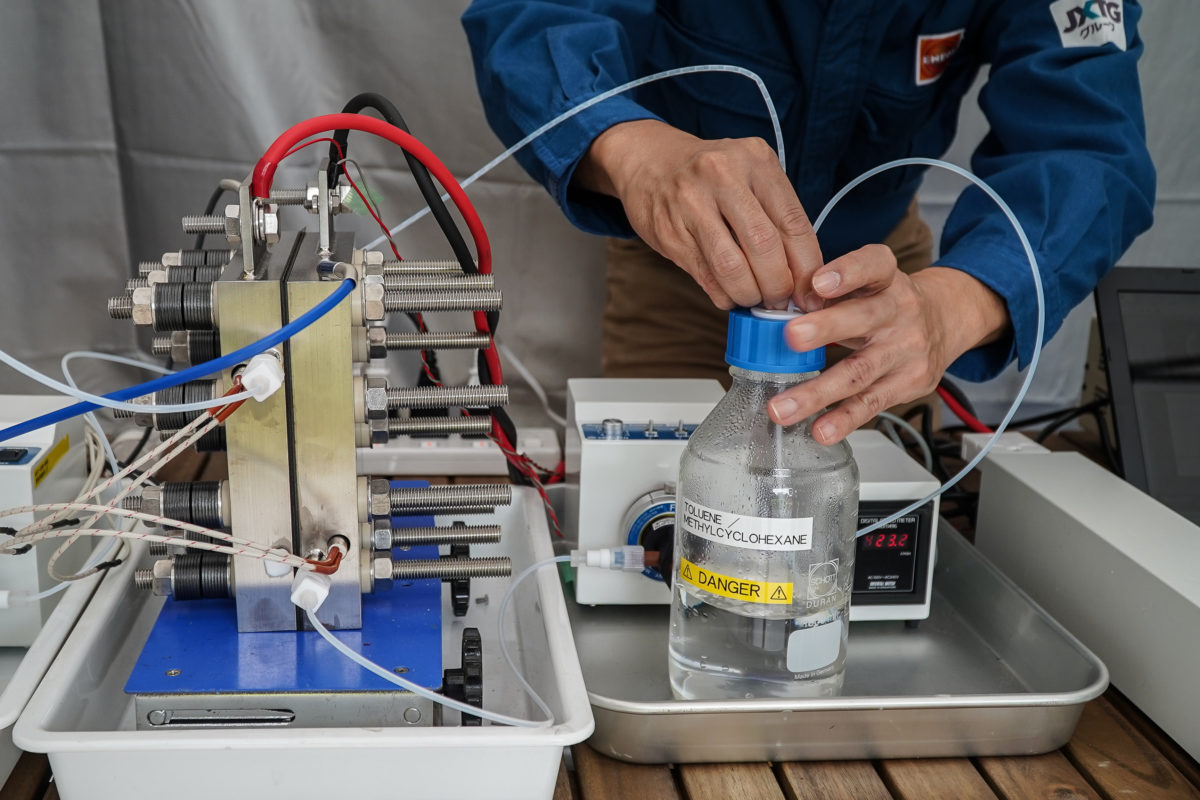While Australia waits for its national hydrogen strategy, mooted as the roadmap to potential $1.7 billion export industry, Queensland has seen its first green hydrogen shipment sent overseas. The landmark first export of hydrogen fuel from Australia to Japan came about through a collaboration between Queensland University of Technology (QUT) and the University of Tokyo.
Transporting hydrogen is associated with a host of challenges in terms of cost, energy efficiency, purity challenges, and minimising leakage. But, in Queensland’s landmark trial, hydrogen was extracted from water in the form of an oil-like substance suitable for transportation using conventional road tankers, pipelines and super tankers.
A team of researchers from Japanese petroleum conglomerate JXTG produced green hydrogen by adding water and acid to a chemical called toluene using solar power as the energy source in the electrochemical conversion process.
“The toluene is converted to a substance called methyl cyclohexane (MCH), which is an energy efficient and safe method for transporting hydrogen,” says Professor Ian Mackinnon, from QUT’s Institute for Future Environments. “In this form, hydrogen can be shipped using conventional road and pipeline infrastructure. Once it has arrived at its destination, the renewable hydrogen is extracted from the MCH and the toluene can be re-used in the transportation cycle.”
Hydrogen has recently garnered a lot of attention in Australia. The nation’s potential to become the world’s largest producer and exporter of hydrogen powered by solar and wind has been widely reported by national science agency CSIRO, Australian Renewable Energy Agency (ARENA), Chief Scientist Alan Finkel and even the International Energy Agency (IEA), against the backdrop of a rising international market for hydrogen led by Asian countries. Japan is leading the drive to deploy green hydrogen in its industry and has been described as Australia’s prime export market.
“This demonstration of renewable hydrogen being successfully exported overseas is an exciting first step in producing and exporting hydrogen at a commercial scale in the future,” Queensland Premier Annastacia Palaszczuk told Parliament on Thursday. “I applaud the project partners on making this a reality.”
The hydrogen that was shipped by JXTG to Japan was produced at QUT’s solar cell facility, which features both CPV and PV arrays, located at the government-owned Redlands Research Facility, south of Brisbane. The JXTG trial is separate project to but aligned with a $7.5 million research project to build a hydrogen production pilot plant at the Redlands facility, which will use locally produced solar energy to extract hydrogen from treated non-drinking water, such as seawater. The pilot plant has been underpinned by funding of $3.35 million from ARENA.
On Thursday, the Queensland Labor government allocated an additional $250,000 towards the project.
“Queensland has a strong future in hydrogen production and export and we are putting steps in place to make that happen, including the development of a hydrogen strategy for Queensland which will be released later this year,” said Minister for State Development, Manufacturing, Infrastructure and Planning, Cameron Dick.
Earlier this year, the Australian Labor Party released a National Hydrogen Plan, which involves directing $1 billion in CEFC funding towards clean hydrogen projects, $100 million in ARENA grants for hydrogen technology refuelling infrastructure, and $40 million from the CEFC’s Innovation Fund to help commercialise new hydrogen technologies and businesses. On top of that, the plan envisages $3 million in funding to Queensland coal port in Gladstone with the aim of creating a hydrogen export hub.
This content is protected by copyright and may not be reused. If you want to cooperate with us and would like to reuse some of our content, please contact: editors@pv-magazine.com.









2 comments
By submitting this form you agree to pv magazine using your data for the purposes of publishing your comment.
Your personal data will only be disclosed or otherwise transmitted to third parties for the purposes of spam filtering or if this is necessary for technical maintenance of the website. Any other transfer to third parties will not take place unless this is justified on the basis of applicable data protection regulations or if pv magazine is legally obliged to do so.
You may revoke this consent at any time with effect for the future, in which case your personal data will be deleted immediately. Otherwise, your data will be deleted if pv magazine has processed your request or the purpose of data storage is fulfilled.
Further information on data privacy can be found in our Data Protection Policy.